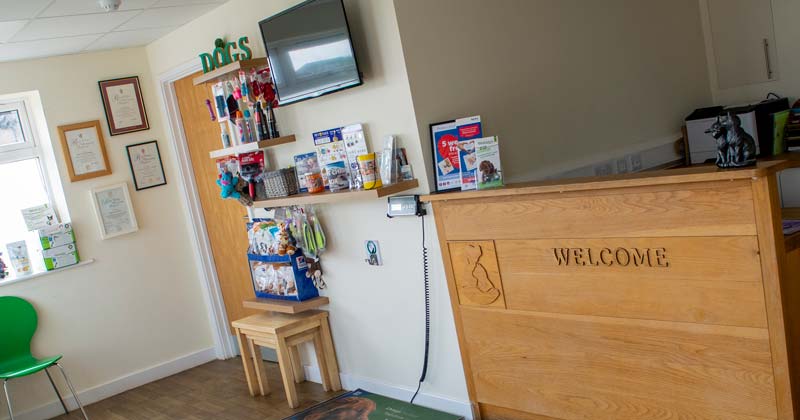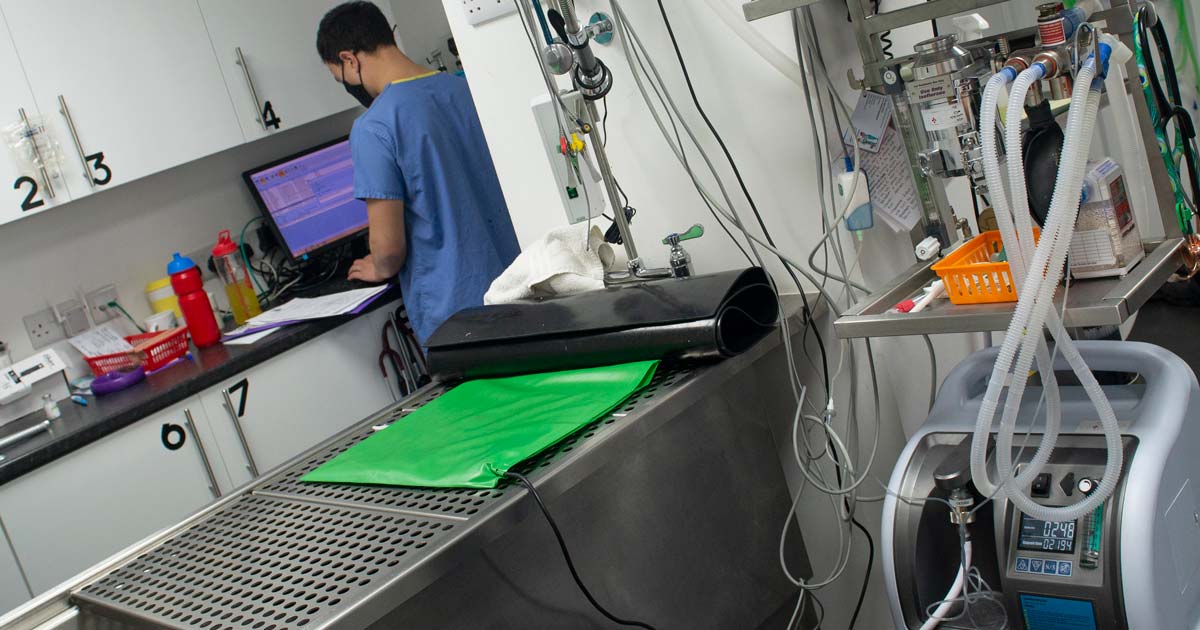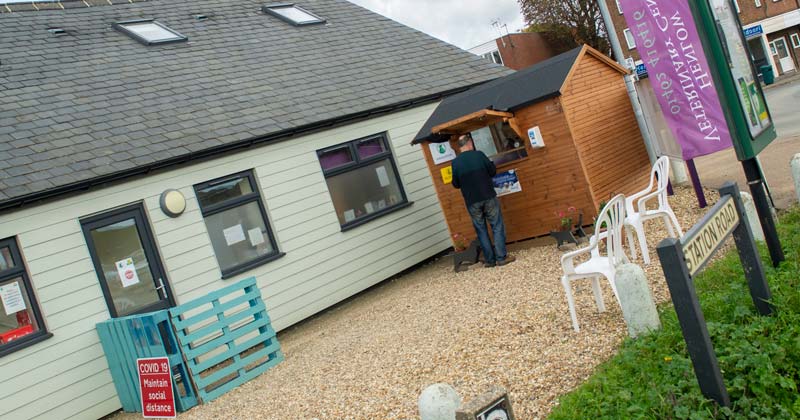13 Nov 2020
One of the most persistent myths attached to owning a practice is that it’s impossible to maintain a sensible work-life balance when you’re running the show. But the reality can be very different, as VBJ discovered when we paid a visited to Henlow Veterinary Centre, an independent first opinion practice in Bedfordshire…

Staff: FTE vets 4 • FTE veterinary nurses 6.5 • trainee nurses 2 • VCA 1 • practice manager 1 • FTE receptionists/admin 4 Fees: initial consult £42 • follow-up £36
When Graeme Mason and Anna Marshall-Brown decided to invest £500,000 to open their own veterinary practice they had only known one another for a matter of months.
That may sound like a bit of a gamble – especially as they both put up significant personal securities – but it’s a gamble that has paid off and this whirlwind business romance has since developed into a match made in heaven.
Despite both Anna and Graeme having families of their own, and all the other commitments that come with children, Henlow Veterinary Centre has thrived since it first opened its doors on 19 June 2017.
After beginning with just two vets, a VN and non-vet Graeme as practice manager, the practice now employs 28 people to serve its 1,800 registered clients, and net turnover is expected to hit £1.2 million this year.
Graeme said: “I was working in a business development role with Elanco when I found this site and got excited about it as a potential for a veterinary practice. My wife and I were lucky enough to be able to buy the building, and then I approached selected local vets to ask ‘do you want to come in and have a business here?’
“It was then that Anna and I met through a mutual colleague, and that was it really. We had the same philosophy for what we wanted to deliver, so we made the big decision for both of us to leave jobs and start up.”
Having met a kindred spirit in Graeme and struck up an immediate bond of trust, for Anna the chance to start a business on her own terms was just what she’d been looking for. Especially as juggling three young children while working at the RVC’s first opinion practice in Camden was no longer providing the work-life balance she craved.
She said: “I was looking into going into practice with a friend and that just didn’t pan out. At this point I got a bit despondent and thought, ‘should I do this on my own?’ but I would find that a really tricky balance with my husband working full-time, and having three children and a house to run on top.
“When we started out, we had to have a lot of chats about what we wanted for this practice, and Graeme’s also got two children and is the main breadwinner, but also wants to be there for his children. So, we said right from the start, yes we wanted to own a practice, but we did not want that to be at the cost of everything else.
“So we took on a slightly different view to probably most new owners and I went in part-time right from the start and Graeme is full-time, but it’s not crazy, it’s flexible full-time.
“We were fortunate to have the opportunity to take on a really experienced vet, Melanie, at the beginning as well. She was someone who I already knew really well and trusted professionally, which meant I did not have to be here six days a week. I work three-and-a-half days a week plus a weekend in the practice, and I do stick to that.
“For anyone reading this wanting to do this I would say that there is nothing in the rule book that says you have to work a hundred-hour week. I know people who do that and are happy doing that, and that’s absolutely fine, but for me the kids are very, very important, so it’s a balance – a work-life balance – and I think we’ve got it pretty good. I’m not saying we don’t have weeks where we’ve worked 50 to 60 hours, particularly recently at the start of coronavirus – but we balance it around and the flexibility it offers us is amazing.”

Located next to a busy roundabout, the practice is spread over two floors, with the ground floor providing around 1,000 sq ft of clinical space and everything one would expect from a modern first opinion practice.
Space is limited, but the existing site boasts a large reception with separate waiting area for cat owners, two consult rooms, a central prep area with an imaging room, a dog ward and a bright, modern theatre off it, which has been glass-fronted to increase the feel of space for those working within.
The practice has 1,800 registered clients and currently looks after around 5,000 animals – more than a 1,000 of which are registered with the Henlow Healthy Pets practice health plan. This is a bespoke package put together by Graeme and Anna that has not only generated a steady flow of income during the past few rollercoaster months of COVID-19, but also reflects the way they want to offer veterinary care.
Anna said: “Our pricing structure is based on a very good standard of care. I don’t think actually, for what we do, we charge enough because we are very much at the higher end – we’ve always gone for high training, high equipment and high standards all the way through.
“So, I think if you look at what we do, our prices are fair, if not a little bit low, but we also want to keep our clients coming through the door.
“We don’t offer discounts if people moan or ask for them. The clients who ask for and are given discounts are never thankful, and will always want more. We also don’t price match; we can’t – how can you price match with the internet or a practice down the road that buys much bigger bulk than we do? I also don’t believe in vets discounting because something’s gone wrong; it just makes you seem disingenuous like you were overcharging in the first place, which we’re not. We try to attract clients who want a high level of care and have the same vision as us.
“We can’t be everything to everybody, I learned that at the beginning – you cannot be cut price to some and gold standard to others, it doesn’t work. You have to decide where your practice is going to be and you stick to it.”
Graeme added: “It’s the same with the health plan – we’ve kept it simple. Our plans include veterinary health check with annual vaccinations, six-month nurse health check and parasite treatment. Anywhere between £13 and £20 for a dog, and £11.50 for a cat. We choose to include as standard the most effective and safest vaccination, flea, tick and worm treatment – for example, we use Purevax, which costs us more for cats.
“As part of our belief that prevention is better than cure, pet nutrition forms a key part of discussions with our clients. As part of the health plan, members have access to cost-price food plus discounts off dentals and neutering. For marketing we put them into two separate areas and show cost savings to encourage membership.”

And high standards are not just applied to clients – Graeme and Anna set high standards themselves as employers, with the team built carefully to embody a positive culture of mutual support and accountability.
The nature of the profession means the team at Henlow contains a lot of mothers working part-time shifts; this does make for a complicated rota at times, but for Anna this is a strength and not a weakness.
She explained: “There’s all this stuff in the BSAVA and BVA about lots of women all having children; it’s a problem for the workforce – I don’t see that. It’s amazing; people like myself, we can still do amazing stuff. I’m not a lesser person because I have kids, I’m not a lesser person because I want to work 35 hours rather than 60 – I can still give so much to the vet world and we recruit people like that. Our first three vets – me, Mel and Hannah – are all mums.
“One works two days a week, one works two-and-a-half. We have now got some full-time younger vets to train up, but we wanted core staff to have the experience to handle most situations. I think it’s rubbish, this whole thing about negativity towards part-timers.
“The negative side, if anyone is thinking of doing this, is the rota is complex and case continuity can be difficult, but we work as a team and we always help each other, we have a list and we all take each other’s cases. There are, of course, additional costs to running this way – increased RCVS fees, CPD and Veterinary Defence Society insurance – however, I think the benefit we get way outweighs that. And it’s been our philosophy right from the start and it’s never been an issue.”
Graeme added: “We’ve always tried to overstaff for the workload have currently; this allows us to provide that time because we don’t always know what we’ve got coming in. To allow us to operate the diary at 80% and still have flexibility for emergencies we need to keep going up every month, so we have to have quite a long view on where we’re going to be.
“We know that we make less money doing it this way – we’re well aware that there will be people out there saying you’re crazy, you’re losing five grand a month of your own profits; something like that – but it’s the way we work.
“We want us to be happy and our staff to be happy. We don’t have a recruitment issue; we don’t have people leaving, meaning we don’t have all those extra hidden costs that come with pushing staff too hard.”

Due to its relatively small size and with COVID-19 still very much a live issue, Henlow Vets is still not letting clients into the building.
However with its innovative “shedquarters” reception located in the car park, some staff working remotely and with a bit of common sense thrown in, the practice is managing to function just fine, with Graeme and Anna predicting growth of at least 30% from last year.
And so, even though the world remains in the grip of a pandemic, the dynamic duo are sticking to their guns and pressing ahead with plans to invest another £300,000 to double the size of their practice by extending their existing site in the bustling heart of Henlow and Lower Stondon.
Anna said: “It’s quite scary with coronavirus, but we were just literally pressing the button on the work when it started. The project will give us twice as many consulting rooms, two operating theatres, isolation facilities, a much bigger dog ward (as our dog ward is a little bit small), walk-in kennels, a separate ultrasound and endoscopy room, and separate x-ray room. It is all very exciting, but also daunting with everything else going on at the moment.”
The original expansion plan was to do the work in three phases, which Graeme and Anna have borrowed to do. Graeme said: “Phase one was the bit next to us – we started two weeks ago. They’re saying the end of January – I’m saying March we’ll have everything in as well. And we’ll be four consult rooms, huge double prep, recovery area, scrub area, separate dental; the lab will be three times the size.
“It is very exciting for us as a practice and will enable us to keep our growth going while maintaining the highest possible standards of care for our patients, our clients and our staff, too.”